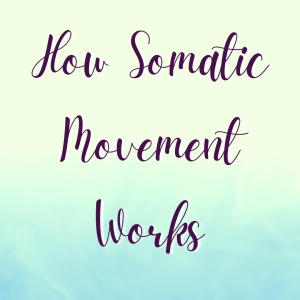 Somatic movement refers to a type of movement therapy that focuses on improving the mind-body connection and releasing chronic muscle tension. It involves a series of gentle, mindful movements that aim to retrain the brain and nervous system to restore natural alignment and relieve pain.
Somatic movement refers to a type of movement therapy that focuses on improving the mind-body connection and releasing chronic muscle tension. It involves a series of gentle, mindful movements that aim to retrain the brain and nervous system to restore natural alignment and relieve pain.
How Somatic Movement Can Help
Here’s how somatic movement can help align the body and potentially alleviate pain:
Sensory Awareness
Somatic movement practices emphasize developing sensory awareness of the body. By paying attention to subtle sensations and movements, individuals can gain a deeper understanding of their body’s patterns, tensions, and imbalances. This increased awareness is crucial for recognizing areas of misalignment and pain.
Release of Chronic Muscle Tension
Somatic movement techniques often involve slow, gentle movements designed to release chronically contracted muscles. These movements help to reset the resting length of the muscles and alleviate habitual patterns of tension that may contribute to pain and misalignment.
Neuromuscular Re-Education
Somatic movement aims to retrain the nervous system and brain to restore optimal movement patterns and alignment. By engaging in specific movements that target areas of dysfunction, individuals can improve coordination, balance, and posture, leading to better alignment and reduced pain.
Mind-Body Connection
Somatic movement practices emphasize the integration of the mind and body. By incorporating mindful attention and intention into movement, individuals can develop a more conscious relationship with their body. This mind-body connection allows for greater self-awareness, self-regulation, and the ability to make conscious choices that support alignment and pain relief.
Stress Reduction
Chronic pain can often be exacerbated by stress and tension. Somatic movement practices can help individuals relax, reduce stress, and release emotional and physical tension. By calming the nervous system and promoting relaxation, somatic movement can contribute to pain reduction and overall well-being.
While somatic movement can offer significant benefits, it’s important to note that it may not be a cure-all for all types of pain. It’s always advisable to consult with a qualified healthcare professional, such as a physical therapist or movement specialist, to address individual needs and develop a comprehensive pain management plan.
Why I Became a Teacher of Somatic Movement
As a teacher of somatic movement, I chose this path after overcoming personal stress and chronic pain. My journey began with a deep desire to find a way to heal my own body and mind. Overcome the relentless grip of chronic pain.
For years, I had been trapped in a cycle of physical and emotional suffering. The weight of stress seemed insurmountable, manifesting itself as tension, anxiety, and a constant sense of unease. At the same time, chronic pain was an uninvited companion that followed me everywhere, dictating my movements and limiting my abilities. Nearly three migraines a week! Sciatica that just would not go away!
In my quest for relief, I stumbled upon somatic movement. Through gentle and mindful movements, I discovered a profound sense of release, both physically and emotionally. It was as if I had unlocked a secret door within myself, leading to a realm of freedom, vitality, and resilience.
 Delving Deeper
Delving Deeper
As I delved deeper into my own somatic practice, I couldn’t help but notice the transformative impact it had on my life. I felt empowered, no longer a victim of my circumstances but an active participant in my healing journey. My chronic pain diminished, replaced by a sense of ease and grace in my movements. Furthermore, stress no longer controlled my thoughts, as I learned to cultivate mindfulness and presence.
The realisation that somatic movement held the key to my liberation was a pivotal moment. I felt an overwhelming urge to share this profound gift with others who were suffering, just as I had been. Therefore, I wanted to guide them toward the path of self-discovery, helping them uncover the innate wisdom of their bodies and unleash their own potential for healing.
Becoming a teacher of somatic movement was a natural progression in my personal healing journey. It allowed me to fuse my passion for movement, mindfulness, and compassionate guidance into a purposeful vocation. Witnessing the transformations in my students’ lives. Watching their pain subside, their stress dissolve, and their bodies awaken to newfound freedom. Additionally, it’s a humbling and gratifying experience.
The Resilience of the Human Body
Each day, I am reminded of the incredible resilience of the human body and spirit. I am inspired by the courage and dedication of my students as they embark on their own healing journeys. Consequently, through my teaching, I strive to create a safe and nurturing space where individuals can reconnect with their bodies. I help them cultivate self-awareness, and tap into their inner wisdom.
I chose to become a teacher of somatic movement because I believe in the power of this practice to liberate individuals from the shackles of stress and chronic pain. My personal experience has taught me that true healing comes from within. I am honored to be a guide and witness to the transformative potential that lies within each of us.



